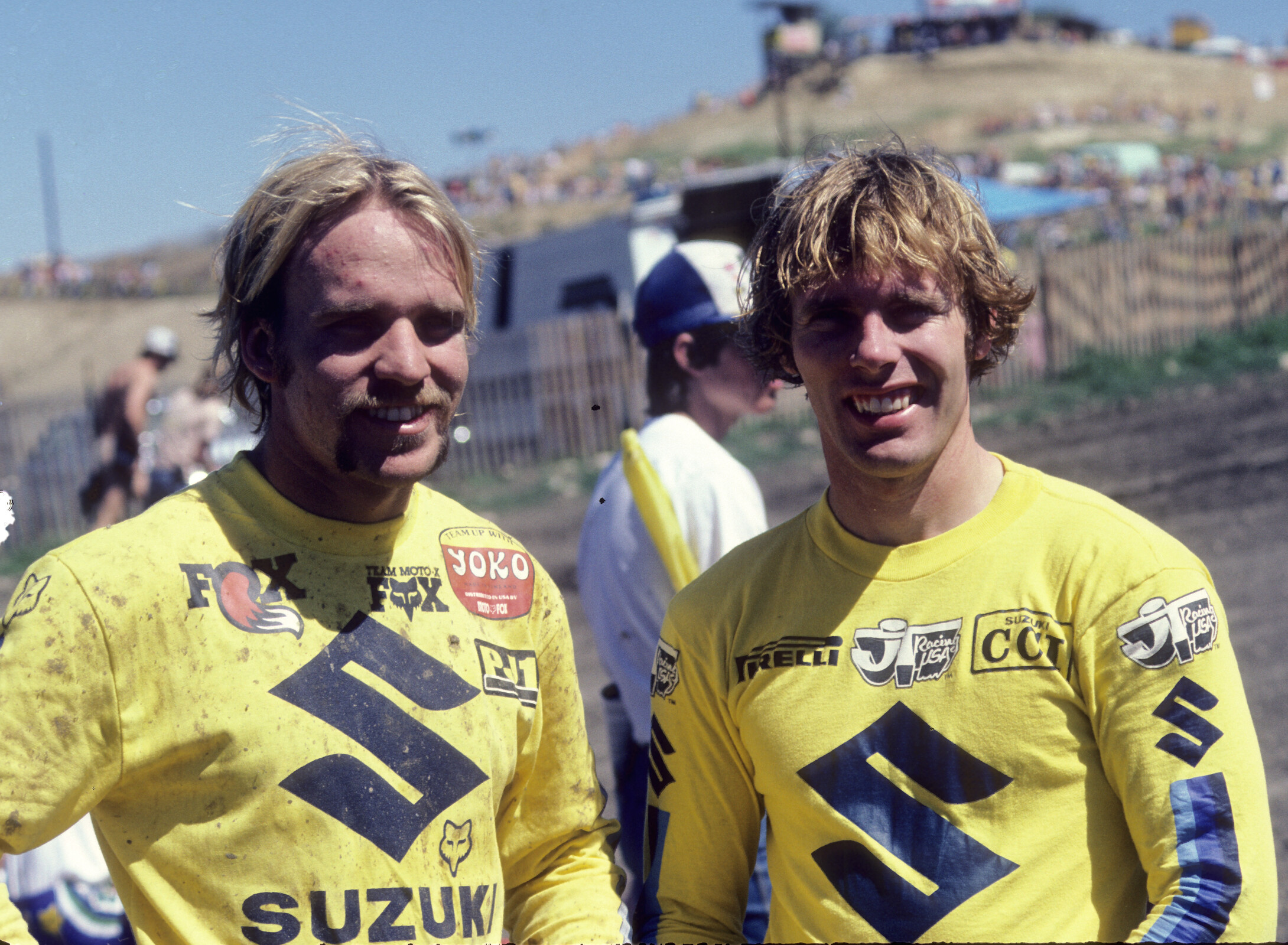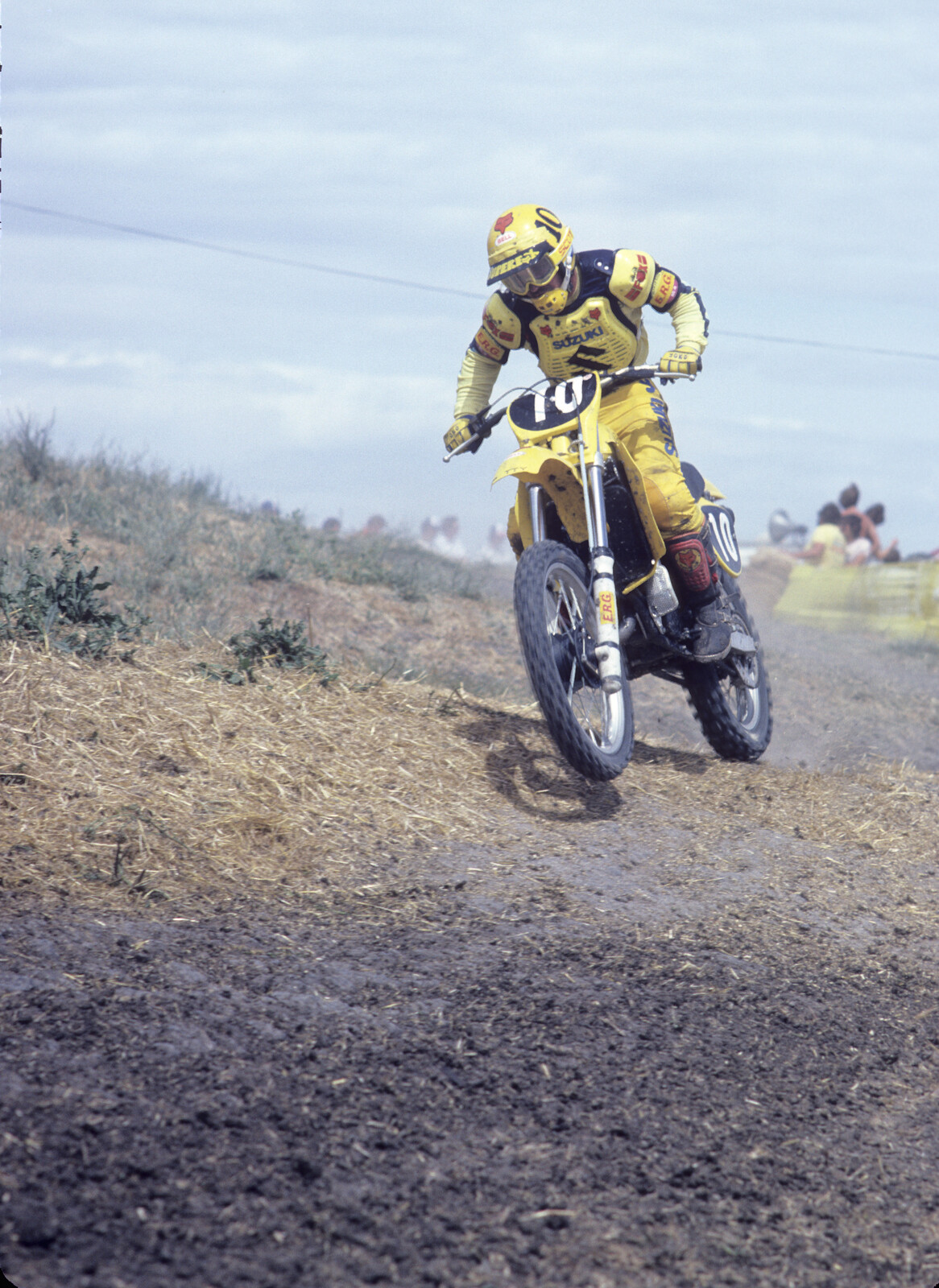Main image courtesy of Dick Miller Archives
Quotes in this article were pulled from the Fly Racing Racer X Podcast with Don Richardson, hosted by Steve Matthes. It was an excellent podcast and covers many more topics than discussed here. If you haven’t already, give it a listen. You can also check out Richardson’s book, An Inventor's Life: The Story of a Teenage Inventor Who Changed Motorcycles, if so inclined.
Some inventions, tools, and techniques have advanced the sport of motocross significantly since their inception. The Racer X staff explains some of those advancements in this feature, “Next Level,” and this month, we’re getting into the origins of modern shock systems, and how advanced concepts have completely changed the way amateurs and pros alike get around a track.
If you travel back in time to the ‘70s, suspension on motocross bikes wasn’t very good, particularly in the rear, which consisted of two shocks on both sides of the motorcycle. There was no linkage, and the shocks absorbed impacts at a linear rate. If you wanted a lot of bottoming resistance, you had to run an extremely stiff spring that would beat you up over smaller chop. If you wanted a plush ride through the bumps, well, good luck not blowing out your ankles on even the smallest of jumps.
The breakthrough, and the beginning of what we ride on today, came in the form of a system that absorbed shock at a progressive rate. In other words, a shock that could be softer in the initial portion of the stroke yet had increased resistance toward the end of the stroke. If you were looking at a graph of the shock as it went through the stroke, it would somewhat resemble a hockey stick.
So how did rear suspension get to that point from those early, twin-shock days? Well, several companies were working on getting to that destination, but Don Richardson was one of the brightest minds pioneering the concept. Educated in the mechanical arts by his grandfather, who worked for Ford Motor Company and was personal friends with Henry Ford, Richardson was cut from the same cloth and didn’t take long to join the world of wrenching and engineering. While working at Ferrari dealerships as a mechanic he took a job working for someone who’d built a racecar with a linkage-style suspension setup.
“It had this rocker arm system on it that I didn’t get,” Richardson said. “To me it just seemed like a waste of fabricating and maintenance. A really good driver at the track said, ‘This is the worst handling car I’ve ever experienced. I don’t know what it’s going to do from one moment to the next, whether it’s going to oversteer or understeer. But it’s the smoothest car I’ve ever driven in. It’s a plush ride.’
“I took a look at the linkage like, ‘What’s up with this thing?’ And I realized it was its ability to convert linear energy into rotational energy. At the right angle, or whatever angle you put in there, you could create this non-linear wheel rate. That’s bad on a racecar, you don’t know how it’s going to handle relative to the position you’re in. So I said, ‘Okay, that’s that, I get it.’”
Richardson didn’t give it too much thought after that, but one day when he was riding his Yamaha at Indian Dunes, which was equipped with “the best rear shocks money could buy,” he was bottoming out on jumps and suddenly Richardson thought of the linkage suspension on the racecar. He thought, “That linkage needs to be on this bike, now.”
From that point on Richardson, who was still a teenager, became obsessed with creating a new, progressive rate suspension system, and after multiple iterations, several years, and many hours in the Pasadena City College machine shop, ended up with a patented system that featured a shock that the top and bottom worked independently of each other, worked separately from the swingarm, and most importantly, delivered progressive resistance. The design was so promising that Yamaha and Kawasaki both took elements from it, paying Richardson royalty fees. Suzuki was especially impressed with it, putting the entire system into production in their RM lineup, which was marketed as a “Full Floater” system. They did it without paying Richardson, unfortunately, which led to a nearly decade-long lawsuit that Richardson won, but that’s another story. The point is, Richardson, who could be described as next level himself, was one of the most important pioneers in the early days of motocross suspension, and his system, that he dreamed up as a teenager, helped change the course of how motocross bikes were suspended.
The May 2023 Issue of Racer X Illustrated
Shop Talk












